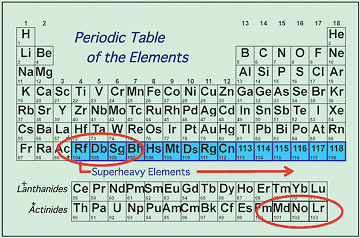ഀ
ഀ
ഀ
page top
ഀ ഀ Copyright(C):Advanced Research Center, JAEA All rights reserved.
ഀ
ഀ
ഀ
ഀ
ഀ

Preface
ഀ ഀഀ
Uunderstanding chemical and nuclear properties of superheavy elements. |
ഀ Discovering new elements and clarifying their unknown chemical and physical properties are most interesting ഀ and challenging subjects in both chemistry and physics. ഀ How many chemical elements can exist and can be produced? How long can they live? ഀ Which properties determine their stability? What are their chemical and physical properties? ഀ How well do their chemical properties follow the Periodic Table? ഀ And how are their orbital electron configurations affected by increasingly strong relativistic effects? ഀ These are some of the most fundamental questions in science. ഀ ഀ
ഀ Because of the short half-lives and the low production rate of SHEs, ഀ each atom produced decays before a new atom is synthesized. ഀ This means that any experiments to be performed must be done on an "atom-at-a-time" basis. ഀ ഀ Thus, rapid, very efficient and selective experimental procedures are indispensable to isolate the desired properties. ഀ We focus on the valence electronic structure of SHEs that is experimentally determined from their ionic radii, ഀ redox potentials, ionization potentials and compound formations. ഀ ഀ To elucidate the limits of stability of superheavy nuclei (SHN), ഀ the shell structure of SHN is investigated through proton and neutron single-particle structures ഀ and through the evolution of nuclear deformation at the highest proton and neutron numbers. ഀ |
ഀ ഀ Copyright(C):Advanced Research Center, JAEA All rights reserved.
ഀ
ഀ
Japan Atomic Energy Agency / Advanced Science Research Center / Research Group for Superheavy Elementsഀ
ഀ
ഀ
ഀ
Japaneseഀ
ഀ
ഀ



